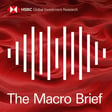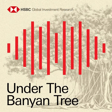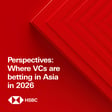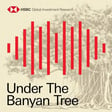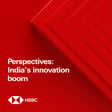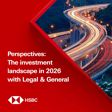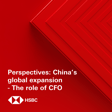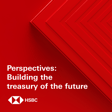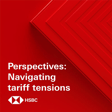Become a Creator today!Start creating today - Share your story with the world!
Start for free
00:00:00
00:00:01

Under the Banyan Tree – Unpacking India's vast consumer sector
In this special episode, recorded in India, Herald is joined by Consumer and Retail Analyst, Amit Sachdeva, for a wide-ranging discussion on the country's diverse and highly nuanced consumer sector.
Disclaimer: https://www.research.hsbc.com/R/51/XQLKvzF Stay connected and access free to view reports and videos from HSBC Global Research follow us on LinkedIn https://www.linkedin.com/feed/hashtag/hsbcresearch/ or click here: https://www.gbm.hsbc.com/insights/global-research.
Hosted on Acast. See acast.com/privacy for more information.
Transcript
Introduction to HSBC Global Viewpoint
00:00:00
Speaker
Welcome to HSBC Global Viewpoint, the podcast series that brings together business leaders and industry experts to explore the latest global insights, trends, and opportunities.
00:00:11
Speaker
Make sure you're subscribed to stay up to date with new episodes.
00:00:14
Speaker
Thanks for listening.
00:00:15
Speaker
And now onto today's show.
00:00:16
Speaker
This is a podcast from HSBC Global Research, available on Apple Podcasts and Spotify.
00:00:22
Speaker
Search for HSBC Global Viewpoint or join us via the HSBC Global Banking and Markets page on LinkedIn.
00:00:29
Speaker
However you're listening, analyst notifications, disclosures and disclaimers must be viewed on the link attached to your media player.
Focus on the Indian Consumer Market
00:00:45
Speaker
Hello and welcome to Under the Banyan Tree, where we put Asian markets and economics in context.
00:00:51
Speaker
I'm Harold van der Linde, head of Asian Equity Strategy, coming to you this week from Bangalore in India.
00:00:57
Speaker
My special guest is fellow equity strategist Amit Satchdeva in Mumbai, and today's podcast is all about the Indian consumer.
00:01:05
Speaker
We're going to look at how Indians are spending their money with a focus on key sectors of the economy, including the dot coms, delivery services, and of course, the auto market.
00:01:15
Speaker
From the land of the original Banyan tree, after which this very podcast is named, let's get the conversation started.
00:01:36
Speaker
Let's start with a few customary facts and figures and set the context for today's discussion.
00:01:42
Speaker
According to the United Nations, India has or is about to overtake mainland China as the most populous nation on the planet.
00:01:51
Speaker
One area that's growing particularly fast is the Indian middle class, which is expected to get 70% bigger between 2021 and 2030.
00:02:00
Speaker
That in turn should help lift spending, general spending in India by more than 7% every year on a compound basis throughout the rest of this decade.
00:02:09
Speaker
Time to bring in our resident expert, Amit
Growth Dynamics of the Indian Market
00:02:11
Speaker
Sajdeva.
00:02:11
Speaker
He's our Indian consumer and retail analyst, also my fellow strategist, and I'd like to welcome him to the podcast.
00:02:19
Speaker
Thank you, Harold.
00:02:20
Speaker
Thank you for having me here.
00:02:21
Speaker
Good.
00:02:22
Speaker
So, Amit, let's just start in general terms.
00:02:26
Speaker
What is the Indian consumer doing these days?
00:02:28
Speaker
So, Harold, India consumer market headline growths have been very impressive last year.
00:02:34
Speaker
For example, apparel may have grown 40 to 50 percent and consumer staples may have grown between 10 and 15 percent.
00:02:41
Speaker
But essentially, this growth has been led by price increases and not the volume increases.
00:02:47
Speaker
So in some sense, the growth has been essentially inflation led.
00:02:53
Speaker
And that has resulted in rural demand being particularly weak.
00:02:57
Speaker
lower income consumer has been hit hard and is basically consuming less, while the top end consumer, high income consumer, I think unimpacted and has done pretty well.
00:03:08
Speaker
You know, if you look at hotels booking or travel, this seems to be doing extremely well.
00:03:14
Speaker
So it's a case of quite divergent consumer trends, if I may say.
00:03:19
Speaker
So the top end is still traveling around, but the low end, yeah, they're really struggling.
00:03:24
Speaker
You always talk about the diversity, not just low and high end, but also the geographical diversity of the Indian consumer, Amit.
Geographical Diversity and Consumer Behavior
00:03:31
Speaker
Can you give me an example of that?
00:03:32
Speaker
So Harold, two-thirds of the population live in rural India and one-third in urban India.
00:03:38
Speaker
Now, rural, we have 600,000 villages, some as low as 40 people living in the village.
00:03:44
Speaker
So it's very difficult to reach.
00:03:46
Speaker
So it is a quite complex market from a consumer income cohort to a geographical cohort as well.
00:03:53
Speaker
Good.
00:03:54
Speaker
Can you explain to me, Amit, a little bit how that works in practice for a company?
00:03:59
Speaker
So, for example, in North India, South India, the consumer will be different from, say, somebody in Mumbai.
00:04:04
Speaker
Can you give me an example of this?
00:04:06
Speaker
So I think the way to think about this is that larger cities such as Mumbai would have very high per capita income.
00:04:12
Speaker
So consumer is very different.
00:04:14
Speaker
South India is very developed.
00:04:16
Speaker
Well, north and if you go up way up north, north is behind south, if I may say, in consumer evolution, for example.
00:04:24
Speaker
So certain companies, so let's say you're a paint company, the product you sell across different parts of India would be extremely different.
00:04:30
Speaker
Is that correct?
00:04:31
Speaker
That would be very different.
00:04:32
Speaker
The mix will be very different.
00:04:34
Speaker
If you go to a more economically challenged area, lower end of water-based paints would be the main product that gets sold.
00:04:41
Speaker
And if you are in cities such as Mumbai or Delhi, it would be emulsions, which is water-based paints, which has a premium finish that goes on the wall.
00:04:50
Speaker
Okay, you also mentioned that two thirds of all consumers are in rural areas.
00:04:55
Speaker
So outside of the cities, it must be very difficult to reach them.
Strategies for Market Penetration in Rural India
00:04:59
Speaker
I mean, I came from the airport here in Bangalore last night, took me an hour to get into the city, was actually relatively okay, but still getting around is not always easy.
00:05:09
Speaker
Distribution is really difficult, right?
00:05:10
Speaker
And some companies have fairly unique solutions to distribute their products across India.
00:05:15
Speaker
Is that correct?
00:05:17
Speaker
That's very correct, Harold.
00:05:19
Speaker
And it's a very sharp observation you make because India not only is diverse, but also economically difficult to serve those consumers.
00:05:27
Speaker
So, for example, many large consumer companies have innovated how to distribute their products to such challenging circumstances or areas.
00:05:38
Speaker
They have assembled an army of
00:05:40
Speaker
women entrepreneurs who are rural women and employed them as basically their own local distributors, small, very, very small scale distributors who buy their product and sell to their fellow village people, riding on a bicycle and carrying a bag of goods with them.
00:05:56
Speaker
So that's the way many companies are innovating to reach the marginal consumer.
00:06:00
Speaker
The cost to serve is very high, but they still can't be ignored because they are future consumer.
00:06:05
Speaker
And that must be sort of tapped into.
00:06:08
Speaker
Okay, so but this is a kind of a traditional way of looking at it.
00:06:12
Speaker
I understand that some e-commerce platforms are really growing fast in India.
00:06:16
Speaker
They must be able to distribute, right?
00:06:18
Speaker
So can you tell us a little bit what happens with the dot-com companies in India?
00:06:22
Speaker
So e-commerce is a large opportunity, Harold.
00:06:24
Speaker
We would be close to $70 billion e-commerce opportunity.
00:06:28
Speaker
And hence, e-commerce is one of the emerging channels to distribute products.
00:06:33
Speaker
Case in point is beauty and personal care.
00:06:36
Speaker
Beauty channel in India is not developed at all.
00:06:39
Speaker
And hence, the e-commerce growth in beauty and personal care has been quite rapid.
00:06:44
Speaker
And it was, I guess, too expensive to put it literally, as you mentioned earlier, on somebody's bike and get him there because the cost of doing that was maybe too high for that particular product category.
00:06:55
Speaker
But if you then do it slightly differently, distribution, and you have higher price points, then the cost of distribution is something you can accept.
00:07:02
Speaker
And therefore, it's easy to distribute this product.
00:07:05
Speaker
Is that fair to say, Amit?
00:07:06
Speaker
Yeah, it actually aggregates the demand.
00:07:09
Speaker
Even if there are 10 very premium consumers sitting in a small town,
00:07:13
Speaker
You could aggregate demand of 10 towns nearby and then serve those 100 consumers.
00:07:19
Speaker
For 10 consumers, it's very difficult to open a shop there.
00:07:22
Speaker
But e-commerce can serve that aggregate demand and tap those consumers and serve their needs.
00:07:28
Speaker
And hence, some categories are finding it uniquely beneficial to develop those categories on e-commerce platforms.
00:07:35
Speaker
Well, thanks, Amit.
00:07:37
Speaker
We're taking a very quick break here.
00:07:38
Speaker
And when we come back, we're going to talk about one particular consumer market, and that's the auto industry and electric vehicles.
EV Market in India vs. China
00:07:55
Speaker
Amit, I arrived in Bangalore, I am driving around the city, I do see some electric vehicles, but to be honest, not so many.
00:08:03
Speaker
I've seen a few Korean and Chinese and Japanese brands, but I don't see too many electric vehicles.
00:08:10
Speaker
In China, actually, you see quite a few of them.
00:08:13
Speaker
Why is that the case?
00:08:14
Speaker
Why is the adoption rate of electric vehicles so low in India?
00:08:18
Speaker
I think that's a great question.
00:08:19
Speaker
The key reason is I think the affordability and the cost of electric vehicles is very high relative to normal traditional fossil fuel-based internal combustion engine.
00:08:32
Speaker
And that needs to be compensated by distance traveled.
00:08:36
Speaker
And still, economic case for a very affordable EV is less.
00:08:40
Speaker
And hence, we see less adoption in the passenger vehicle, which is less than 1%.
00:08:46
Speaker
Have there been subsidies divided?
00:08:49
Speaker
Has the government, for example, provided some subsidies?
00:08:52
Speaker
The government provides a subsidy, but still it's not enough to make it very compelling case to own EVs.
00:08:59
Speaker
And that is perhaps held back the growth of passenger vehicles.
00:09:03
Speaker
but at the same time if you see two wheelers they seem to have taken off a little bit more because it's sort of more affordable than the passenger vehicle so that's the kind of dichotomy we see uh what's the experience in china harold if i may ask you well in china i think the subsidies have been substantial and the government has made a lot of investments in making sure that there is quite a few charging stations across the nation
00:09:28
Speaker
So in China, if you buy an EV, you're not so much worried that you think I can't charge it somewhere along the road.
00:09:34
Speaker
And therefore, my radius, which I can reach with that particular car is quite small.
00:09:39
Speaker
That's not the case in China.
00:09:40
Speaker
So subsidies have helped demand, but also they've put the infrastructure in place.
00:09:44
Speaker
And I guess that's the difference.
Manufacturing and Consumer Demand Dynamics
00:09:46
Speaker
More broadly speaking, Amit, while I'm just listening to you, what I think is a key difference here comes between India and China is the kind of development stages that India and China went through.
00:09:59
Speaker
China was really a country that had a lot of manufacturing bases built up in the early 2000s and people flocked to the factories.
00:10:07
Speaker
got a job there and that's where consumer demand started to develop.
00:10:10
Speaker
So demand was fairly concentrated in cities such as Beijing, Shanghai, Ningbo, Shenzhen, etc.
00:10:17
Speaker
In India, that's not the case.
00:10:18
Speaker
India never had that boost and this boom in manufacturing.
00:10:22
Speaker
So the consumer remained much more rural and therefore getting to those consumers has always been extremely difficult.
00:10:29
Speaker
I mean, the roads are not always very helpful and as you said,
00:10:32
Speaker
that it's also very costly to get to those particular consumers.
00:10:35
Speaker
Sometimes you have to literally ask people to put them on a bicycle and get to the villages.
00:10:40
Speaker
That seems to be changing now with the internet names, but it makes the Indian consumer market completely different from the Chinese.
00:10:48
Speaker
And you can see this in the companies.
00:10:50
Speaker
The average Chinese company is dealing with a lot of competition in India.
00:10:54
Speaker
That's much less so.
00:10:55
Speaker
And Indian consumer companies belong to the most profitable companies on the planet.
00:10:59
Speaker
Yeah, in some sense, there's an opportunity and challenges too, and which results in competitive advantages, which have existed for many years for some of the companies which have larger scale, and they can profit from their large positions.
00:11:13
Speaker
Exactly.
00:11:13
Speaker
The ones that have figured out how to distribute are extremely profitable.
00:11:17
Speaker
And that's the opportunity that they've been able to grasp, you could say.
00:11:22
Speaker
So, Amit, just to round it off, what are some of the very latest trends in the Indian consumer space?
Consumer Value Perceptions and Market Opportunities
00:11:28
Speaker
So Harold, one thing that I've observed, which is very, very relevant, is consumer, although is very value seeking, or at least look for discounts and fair pricing, but also still is very demanding.
00:11:39
Speaker
Case in point, very low priced fashionable clothes are in vogue now.
00:11:44
Speaker
So companies that are able to provide high fashion content in apparel at very low prices
00:11:50
Speaker
and give them the experience of some great shopping, they are doing exceptionally well.
00:11:55
Speaker
So this is sort of gives you a summary of India consumer experience that demanding, value seeking and also always evolving in taste and preferences.
00:12:07
Speaker
Amit, that is really for the lower end, but what about the upper end of the consumer spectrum?
00:12:10
Speaker
Are they looking for bargains as well or is this much less so the case?
00:12:15
Speaker
My sense is that bargain seeking is pervasive across price points.
00:12:19
Speaker
You know, I would say that even premium consumers wants great value for the premium goods.
00:12:24
Speaker
If somebody is able to provide that, there is also a case where, you know, things can get unlocked very quickly as well.
00:12:31
Speaker
across the whole of the Indian consumer space.
00:12:33
Speaker
Thanks a lot, Amit, for that.
00:12:35
Speaker
It's very inspiring.
00:12:35
Speaker
Can I add one more small bit of tidbit here, Harold?
00:12:38
Speaker
Is that bargain hunting is pervasive, but what happens is when you discount too much, brands get fatigued.
00:12:46
Speaker
Some companies are quite wary of discounting their products because they've been labeled as probably cheaper goods.
00:12:52
Speaker
So some companies would do very limited discounting.
00:12:55
Speaker
So it's value seeking behavior, but I think different companies can resort to different way to play it.
00:13:02
Speaker
So just to put this all together, the Indian consumer space is just incredibly diverse and complex.
00:13:09
Speaker
You have rural versus urban.
00:13:11
Speaker
You got north versus south.
00:13:13
Speaker
You got high-end consumers that look for discounts, but where the brands struggle to figure out how they deal with this.
00:13:19
Speaker
And you have at a low end people that definitely are looking for value and companies that can capitalize on that can do extremely well.
00:13:26
Speaker
And then, of course, you have the issue of distribution, getting these products into the thousands and thousands of villages
00:13:32
Speaker
that are dotted across the landscape here in India.
00:13:35
Speaker
And that is an absolute big challenge.
00:13:38
Speaker
And the companies that are able to solve all these problems very well can be incredibly profitable enterprises.
Conclusion and Future Episodes
00:13:45
Speaker
And some of the most profitable listed companies on the world and in the planet are Indian consumer names.
00:13:52
Speaker
I'd like to thank Amit for dialing in from Mumbai.
00:13:55
Speaker
It was a really fascinating discussion, Amit.
00:13:58
Speaker
Thanks for being on the Banyan Tree podcast.
00:14:00
Speaker
Thank you, Harold, for having me.
00:14:02
Speaker
It was a great pleasure.
00:14:03
Speaker
And that brings us to the end of this special edition of Under the Banyan Tree, recorded in Bangalore and Mumbai.
00:14:14
Speaker
We hope you've enjoyed learning more about spending in India as well as what's driving it.
00:14:20
Speaker
My regular co-host, Fred Newman, will be taking the reins on a podcast back in Hong Kong next week and will be back recording together soon.
00:14:27
Speaker
Take care for now and we'll talk to you next time.
00:14:31
Speaker
Thank you for joining us at HSBC Global Viewpoint.
00:14:35
Speaker
We hope you enjoyed the discussion.
00:14:37
Speaker
Make sure you're subscribed to stay up to date with new episodes.
